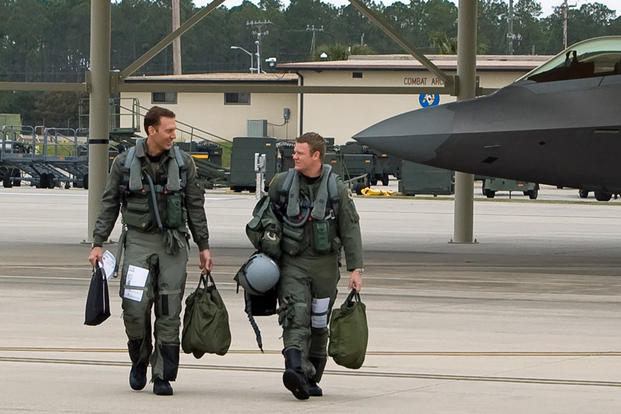NATIONAL HARBOR, Md. -- The U.S. Air Force is trying new initiatives to sustain and build its pilot ranks, including a unique fly-only track within Air Mobility Command, bonus incentives and preferred basing.
But another element the service wants to build on? Trust.
"We have asked them to do a lot over 25 years," said Gen. Mike Holmes, head of Air Combat Command. He spoke during a panel addressing the service's pilot shortage at the Air Force Association Air, Space and Cyber conference.
The panel also included Lt. Gen. Scott Rice, director of the Air National Guard, and Gen. Maryanne Miller, head of Air Mobility Command, who was most recently the head of the Air Force Reserve.
Related content:
- Amid Pilot Shortage, Air Force Tests Out Fly-Only Career Track
- Student Pilots Given Unlimited Simulator Time in New Air Force Experiment
- Air Force to Study How Many Training Squadrons It Needs for Operational Plus-Up
"I think the momentum is building. In Air Combat Command, we're flying more. … My preferred technique is to keep you busy flying. But I want you to trust us," Holmes said.
He pointed to Air Force Secretary Heather Wilson and Chief of Staff Gen David Goldfein's vision to reduce additional and miscellaneous duties that take airmen away from their primary jobs.
Miller said she expects to hear from more airmen on flight lines as she travels in her new role to AMC bases in coming months.
"I hope to get that feedback. My gut says we haven't broken trust," she said. "[But] are we busy? We are busier than we've ever been. Is that demand signal going to slow down? The answer is it is not going to slow down. We're going to have to prioritize the training versus getting the mission done versus building that [downtime] with your families. We've got work to do."
She said AMC is responsible for roughly 40 percent of the Air Force's pilot attrition each year, contributing to the service's overall pilot shortage. The bonus take rate has not seen a spike either, she said.
"The economy is looking for you," Holmes said to airmen in the room, referencing the recent airline hiring boom. He said airline hiring efforts are the biggest factor that drives pilot retention and production problem in the services.
Twenty-five years of continuous combat have made Air Force fliers the "best the world has ever seen," Holmes said.
But that doesn't mean there isn't room for improvement.
The composition of flight squadrons needs to reflect the entire U.S. population, he said. Squadrons today, particularly fighter squadrons, are still mostly composed of white males, something that must change to reflect the country's demographics, he added.
While the pilot shortage remains less of a problem in the Guard, "the crisis is coming," Rice said.
"I can't offer you the compensation that Delta Airlines can," Holmes said. "What we can offer you is a life of meaning and purpose. I want you to feel like you are a part of a community … the squadron is the place where that community exists."
-- Oriana Pawlyk can be reached at oriana.pawlyk@military.com. Follow her on Twitter at @Oriana0214.










